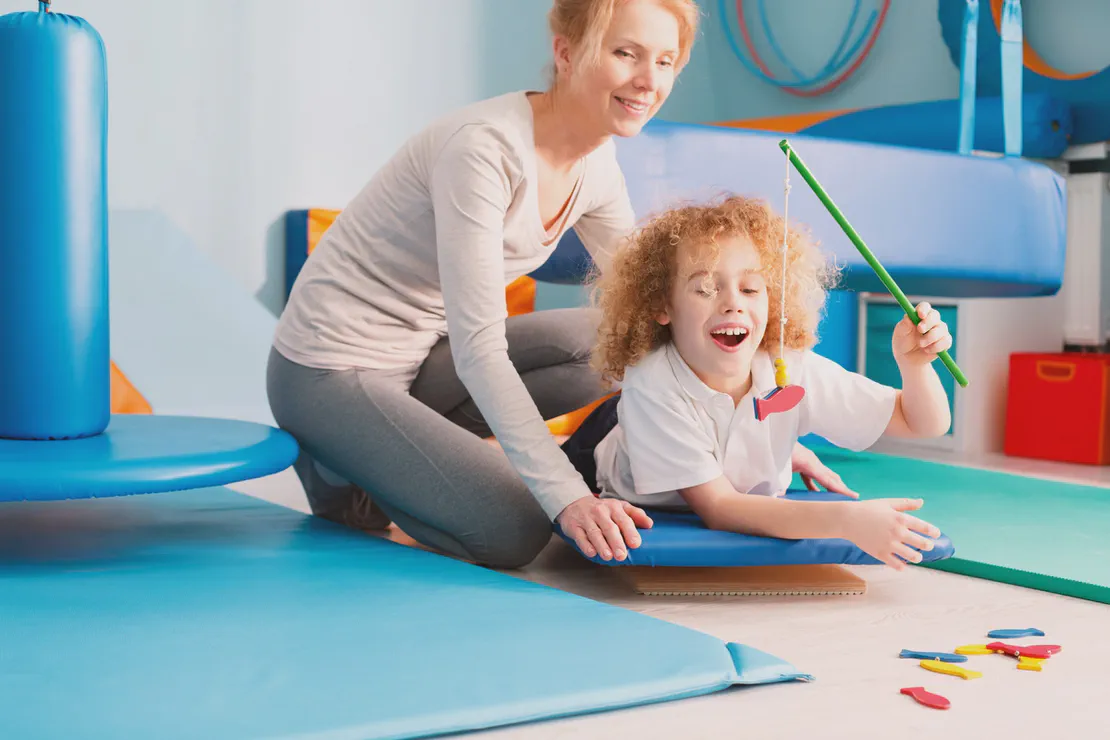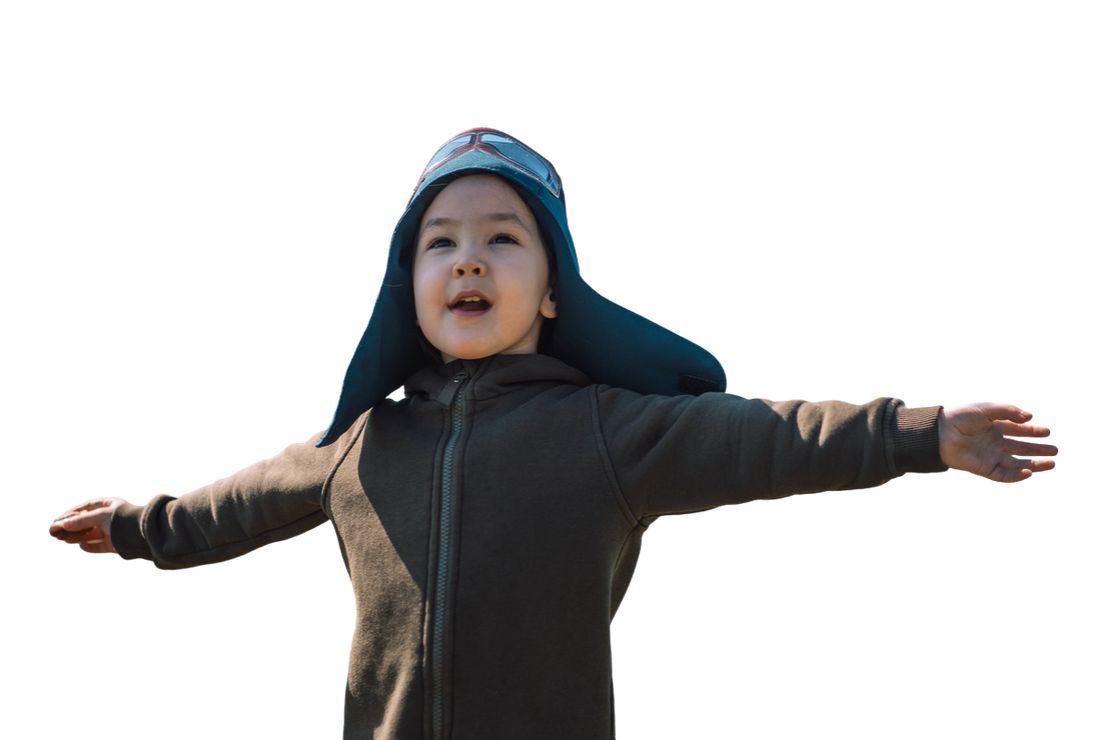SP Definition
Cerebral palsy (CP) is a non-progressive neurological disease seen in children that develops as a result of damage to the brain tissue that continues to develop before, during or after birth (Anttila, Autti-Rämö, Suoranta et al, 2008). It has been reported that the prevalence of CP in the world is between 1.5 and 3 per 1000 live births, while in Turkey this rate is 4.4 per 1000 live births (Oskoui, Coutinho, Dykeman et al, 2013; Serdaroǧlu, Cansu, Özkan et al, 2006).
In the clinical picture, many problems such as limitation in activities, impaired muscle tone, loss of muscle strength, abnormal posture, limitation in motor skills, speech impairment, balance-coordination problems, sensory processing problems, weakness in hand-eye coordination, mental retardation or cognitive problems are seen together and at different levels.
Classification of Cerebral Palsy
CP is usually classified according to the motor type, the anatomical parts of the motor impairment or the degree of functional impairment. Classifications help to define the degree of functional independence of cerebral palsy, allowing the most appropriate treatment to be chosen.

Spastic Type SP
In addition to spasticity, hyperreflexia, clonus and upper motor neuron symptoms are observed in children with spastic type CP (Figure 2.2). In addition, the child performs voluntary movements slowly and with considerable difficulty. It is noticeable that there is no fluency. Individuals with spastic type CP can be divided into three classes: spastic diplegia, spastic quadriplegia or spastic hemiplegia.
Dyskinetic type SP
Children with dyskinetic CP have more than one involuntary movement pattern. Generally, an increase in tonus is seen while trying to move the extremities or with a change in mood and then disappears. This pattern reduces the quality of voluntary movement. It can sometimes be accompanied by spasticity, but does not cause joint contractures as in the spastic type.
Ataxic type SP
Children with this type of CP have poor head, trunk and pelvis stabilization. Movements are dysmetric. Therefore, their gait pattern is an unstable gait in which balance cannot be maintained. Often accompanies other types of CP, rarely seen in pure form
Symptoms:
Symptoms in 1 Month Baby:
-
Constantly calm and lethargic
-
Difficulty sucking
-
Frequent vomiting
-
Failure to respond to environmental stimuli
Symptoms in a 3 Month Old Baby:
-
Spring-like tension on the head and heels when lying on the back
-
Lack of smile expression
Symptoms in a 4 Month Old Baby:
-
Lack of head control
-
Continuous bending of the fingers
-
Shift or strabismus in the eyes
Symptoms in 8 Month Old Baby:
-
Lack of turning and sitting skills
-
Inability to use hands sufficiently
-
Straightening both legs together when kicking
-
Failure to separate the legs while sitting for a long time, crossing them Symptoms in a 10-month-old baby:
-
Not crawling or jumping by pulling both feet together while crawling
-
Difficulty standing up with support
-
Not responding when called by name
-
Excessive drooling
Symptoms in a 1 Year Old Baby:
-
Inability to walk with support
-
Walking on tiptoe or crossing legs
CP is more prominent than other pathologies that occur in childhood due to the frequent occurrence of deficits in motor functions. Due to these motor deficiencies, the activities in the daily lives of children are negatively affected and restricted and prevent the achievement of full independence. Appropriate treatment and therapy methods should be included in the intervention program for children with CP to reach age-appropriate skills.
The aim of rehabilitation approaches planned for children with all types of CP is to eliminate or reduce the problems experienced and to help eliminate the limitations experienced in their daily activities (Organization, 2001). When the studies conducted in this field were examined, it was seen that a wide range of treatment protocols were applied for the solution of motor problems.
The Role of Occupational Therapy in Cerebral Palsy
Occupational therapists, who are part of the multidisciplinary team in cerebral palsy, aim to enable individuals to fulfill their daily life activities and roles, to enjoy life by increasing quality of life and independence. Cerebral palsy and occupational therapy is an integral part of the general therapy program. Work is carried out to increase independence and participation in daily life by evaluating individuals from all aspects.
Occupational therapy focuses on the weak and strong aspects of the individual. The person-centered approach of occupational therapy individualizes and applies all intervention methods to improve activity performance, taking into account the individual’s wishes and activities, including sensory, motor, cognitive and social skills.
Individuals with Cerebral Palsy;
-
Eating, brushing teeth, bathing involving multiple muscle activation due to muscle and joint coordination problems They may have difficulty achieving full independence in activities of daily living such as making, dressing and writing.
-
May have sensory problems such as fear of sudden noises, inability to regulate rapid movement, maintaining and maintaining balance, being hypersensitive to touch or constantly wanting to touch things, inability to tolerate changes in head position.
-
May have problems with cognitive skills such as thinking, memory, orientation, planning, generating ideas.
-
They may need to be supported with adaptive equipment and strategies during mobilization and transfer processes.
-
May have problems with socialization.
With the physical and sensory studies, the self-confidence of individuals with increased function is improved and socialization problems are eliminated. In addition, as individuals with self-confidence will have more courage for activities, they will appear as a more goal-oriented and active individual in daily life.
“Occupational therapy is important for individuals with cerebral palsy in many ways.
Development of Motor Skills: Occupational therapists apply activities and games appropriate to the level of the individual to develop fine motor skills (using hand and finger muscles) and gross motor skills (using large muscle groups).
Writing Skills:
Handwriting is a complex skill that requires coordination and proper interaction between visual, perceptual, cognitive and motor functions.(Murchland et al. 2008) 4 areas are very important for writing skills in cerebral palsy.
-
Postural control
-
Vehicle handling and fine motor control
-
Vision and visual perceptual skills
-
Cognition, attention and executive functions
It is very important for children to practice and receive support while learning these complex skills. Occupational therapists support the development of the individual’s skills and offer activities related to writing and academic skills.
Activities of Daily Living: Provides activities to support the skill development of children with CP so that they can independently perform activities of daily living such as eating, dressing, using the toilet and performing self-care activities.
Sensory Processing: Sensory processing refers to a person’s ability to receive, organize and interpret sensory inputs.(Kramer and Hinojosa, 2009) Our senses bring us information from our environment and our body, allowing us to react at the right time.
We may encounter some sensitivity or seeking patterns in the senses of individuals with cerebral palsy. Occupational therapists help the child to process sensory information correctly by providing sensory integration support.
Visual-Motor Skills Training: The incidence of visual acuity impairment with cognitive and motor performance is high, and children with cerebral palsy are at risk of visual-motor and visual-perceptual impairment. It has been found that 57% of children without intellectual disabilities have visual-perceptual disorders (Kozeis et al. 2006)
Cognitive-motor performance depends on the following:
Good quality sensory input (vision and ocular motor skills); processing (cognitive skills to analyze visual information); and output (behaviors based on visual information - recognizing, discriminating, matching and detecting relationships) (Todd, 1999)
Occupational therapists continue to work on visual-motor skills and play an active role in the field of vision rehabilitation.
Use of Adaptive Equipment: They suggest the use of adaptive equipment to help the child become more independent in daily activities and teach them how to use it. For example, special spoons, plates, dressing aids or wheelchairs.
Environmental Arrangements: They make recommendations to make the child’s living space and school environment more accessible. Domestic interventions are very important to ensure activity independence and regulate transfer.
Training and Support: They train families and caregivers on how to be supportive during the child’s therapy process. It provides parents with tips on activities and exercises they can do at home to improve their children’s skills.
Social and Emotional Support: Occupational therapists help children with CP to improve their social skills and emotional stabilization. The child’s acquisition of self-efficacy in daily life is the basic building block for emotional stabilization.
Occupational therapy support of the individual
-
Increases independence.
-
Develops the ability to build and play games.
-
Provides development of self-esteem and self-confidence.
-
It puts your daily life into a workable routine.
-
Improves quality of life.
-
Provides regulation.
-
Develops thinking and learning skills
-
Provides stress management
-
Develops gross motor and fine motor skills.
In Conclusion
Occupational therapy contributes greatly to improving the quality of life of individuals with Cerebral Palsy by maximizing their potential. This is a holistic approach that encompasses not only physical skills, but also social, cognitive, emotional and sensory development.
Dear families, you can also benefit from our team and consult an Occupational Therapist to contribute to your child’s development and take one more step towards independence.
Writer: Erg. Aleyna Sena Altuğ





